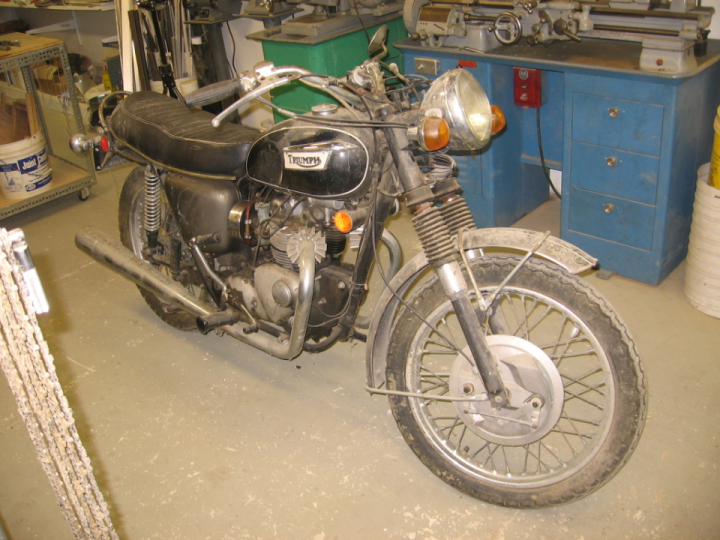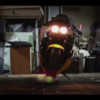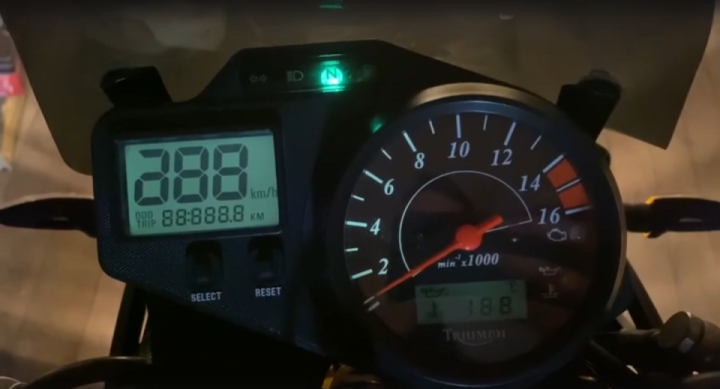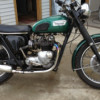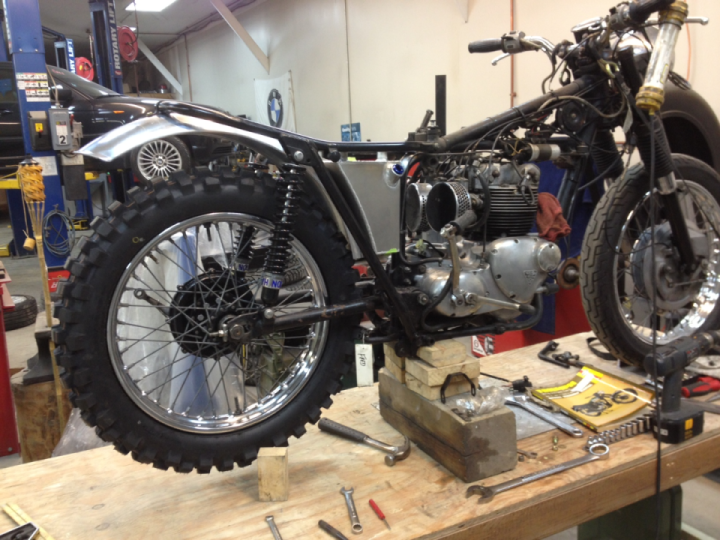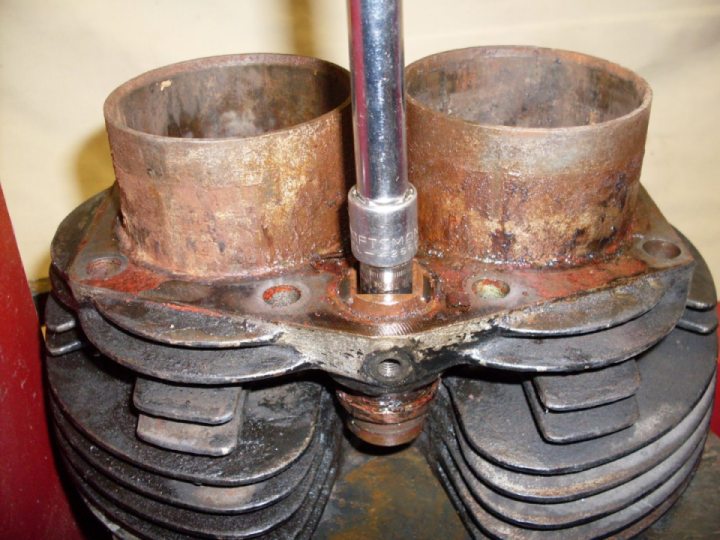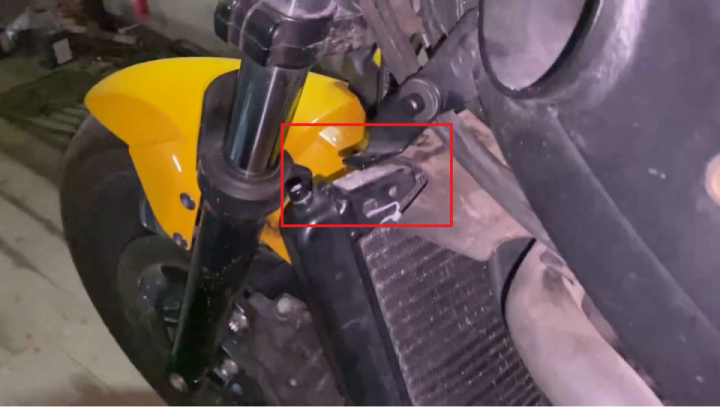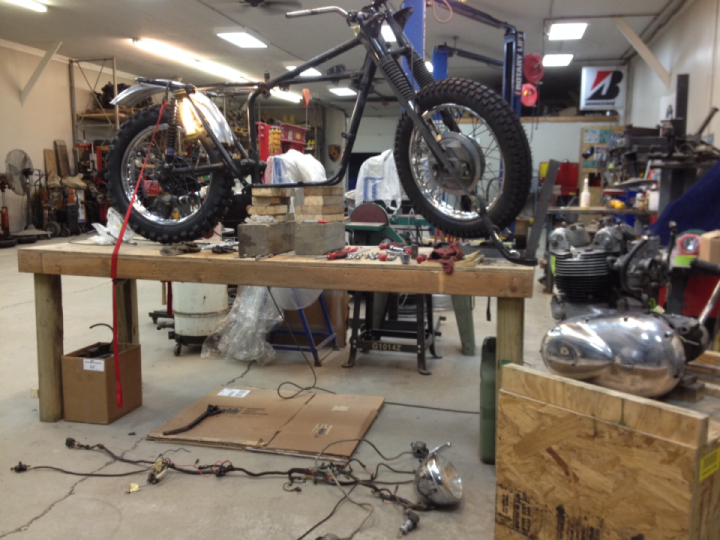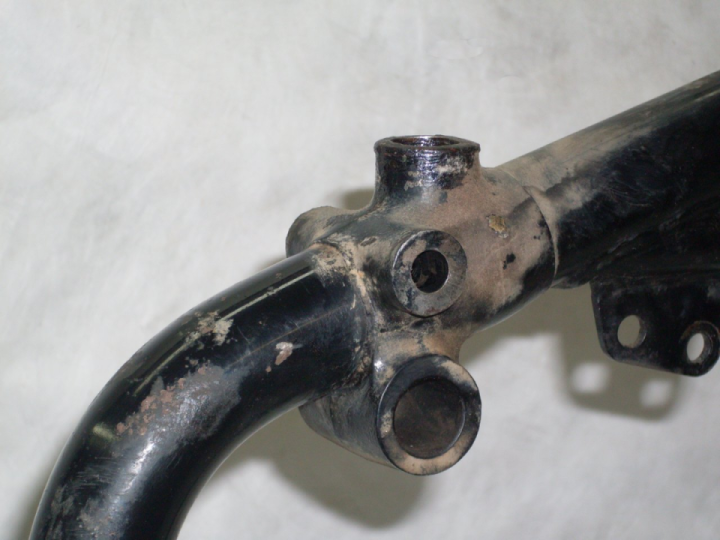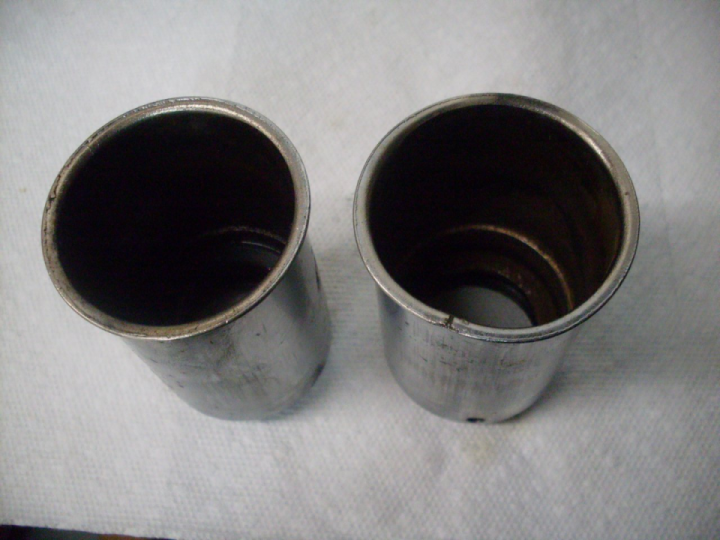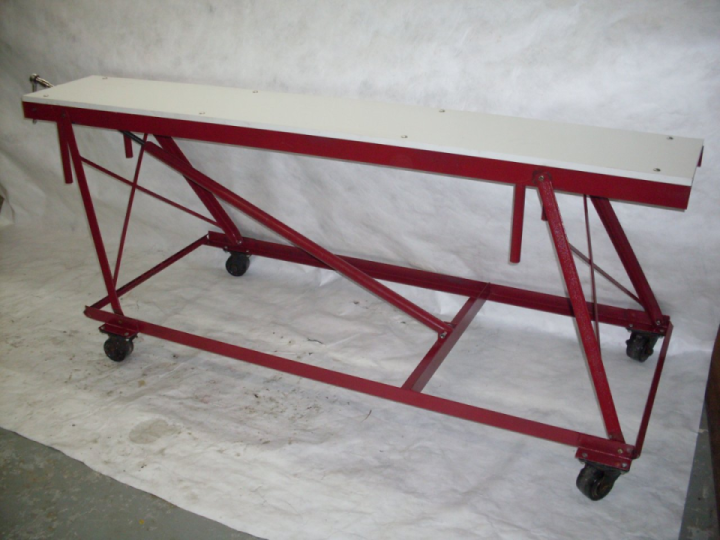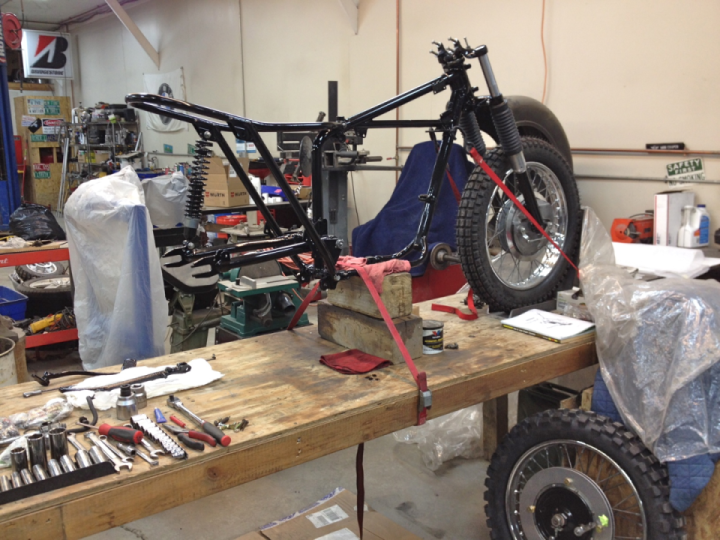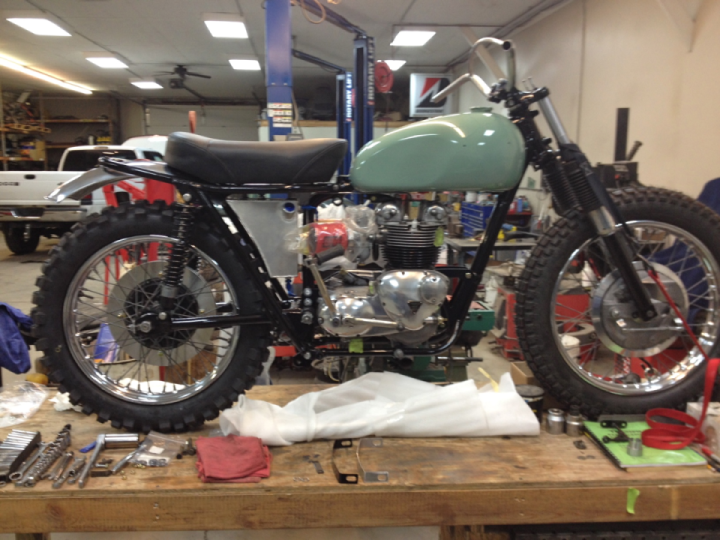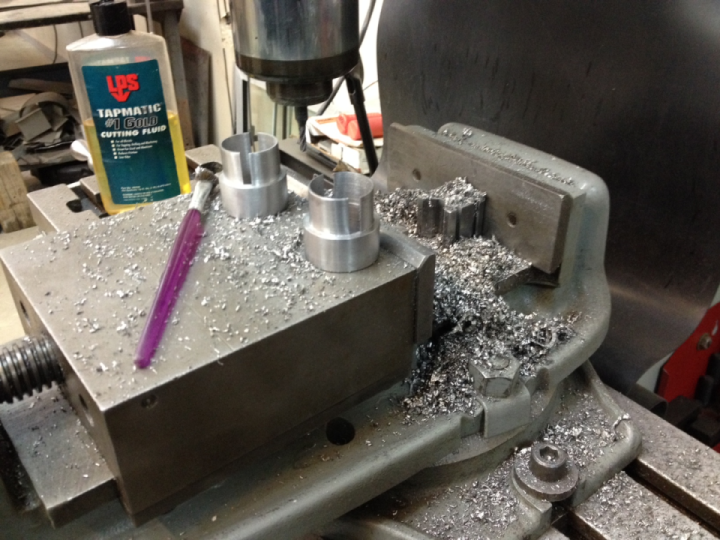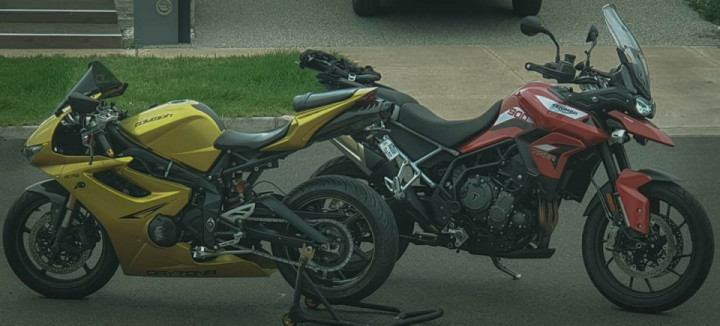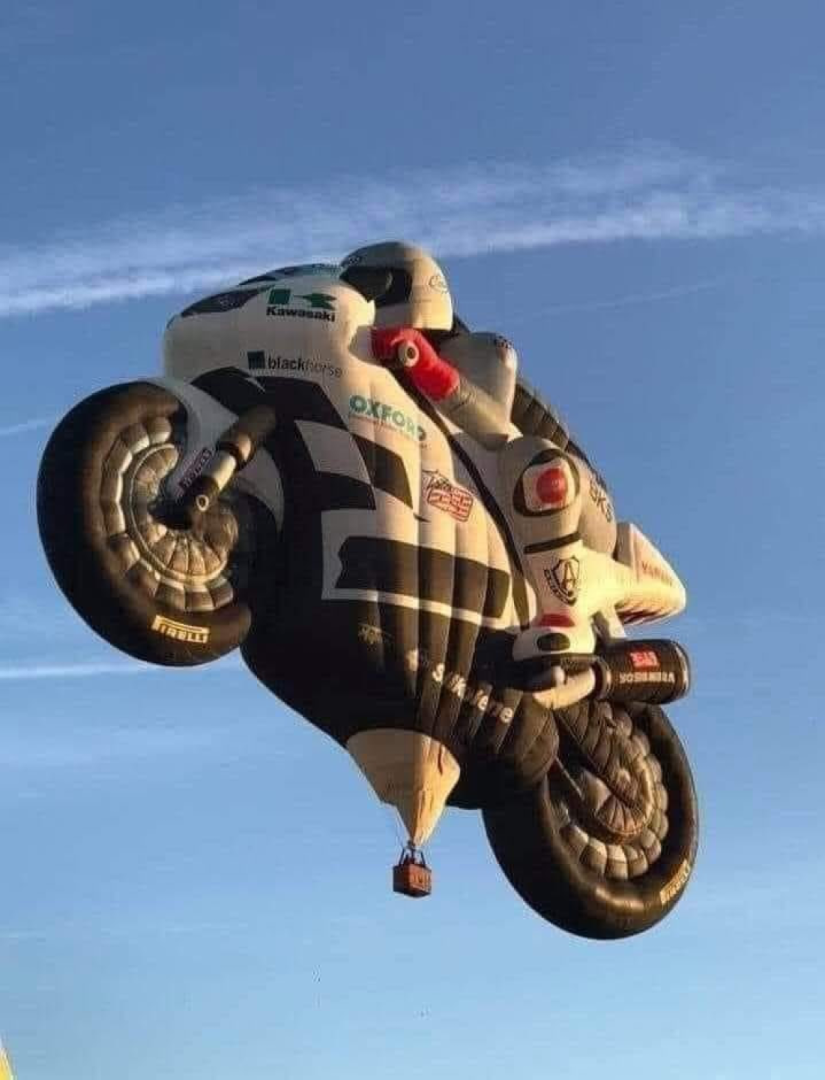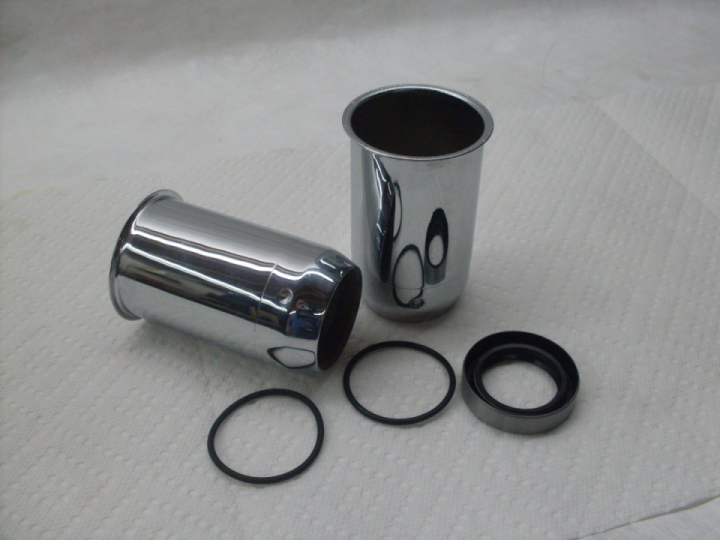Mounting the Forks (have to build a lift first) Triumph Daytona T100R
I was ready to mount the forks on the frame, and, in an uncharacteristic flash of foresight, I realized that assembling the entire bike up on the work table may not be the smartest plan. Doing it all stooped over on the floor didn't appeal to me either, so I took some time out to build a lift.
I wanted a lift that would support the bike either on the wheels or on the center stand, so some kind of platform lift was what I needed. A web search showed examples of these were based on two different lift mechanisms--the sissors or the parallelogram. I decided on the parallelogram type, mostly based on the materials I had on hand. Here is the result: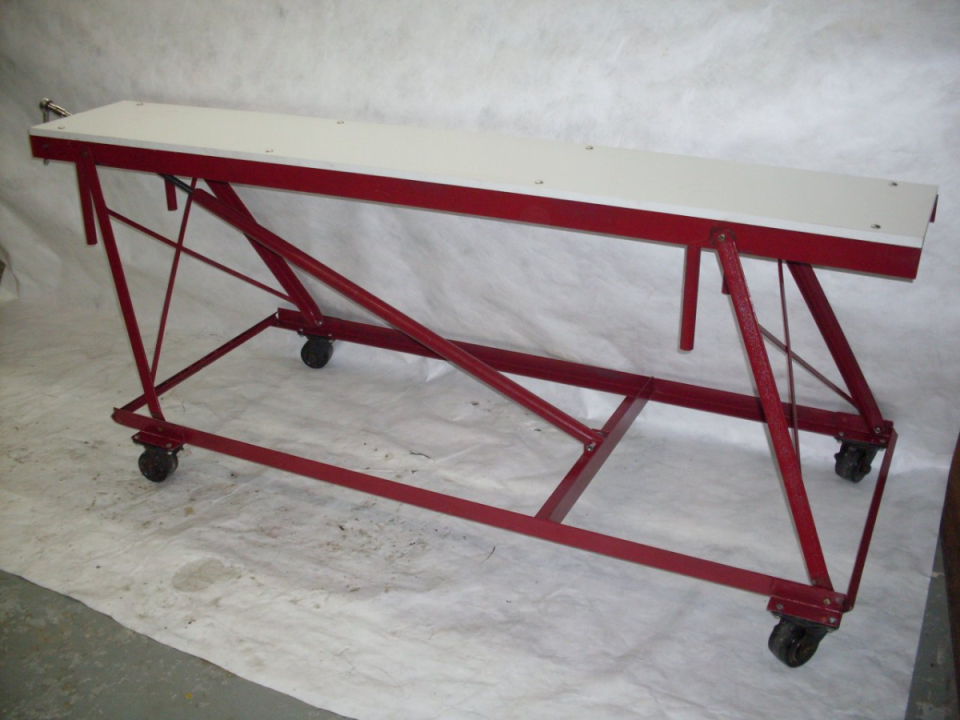
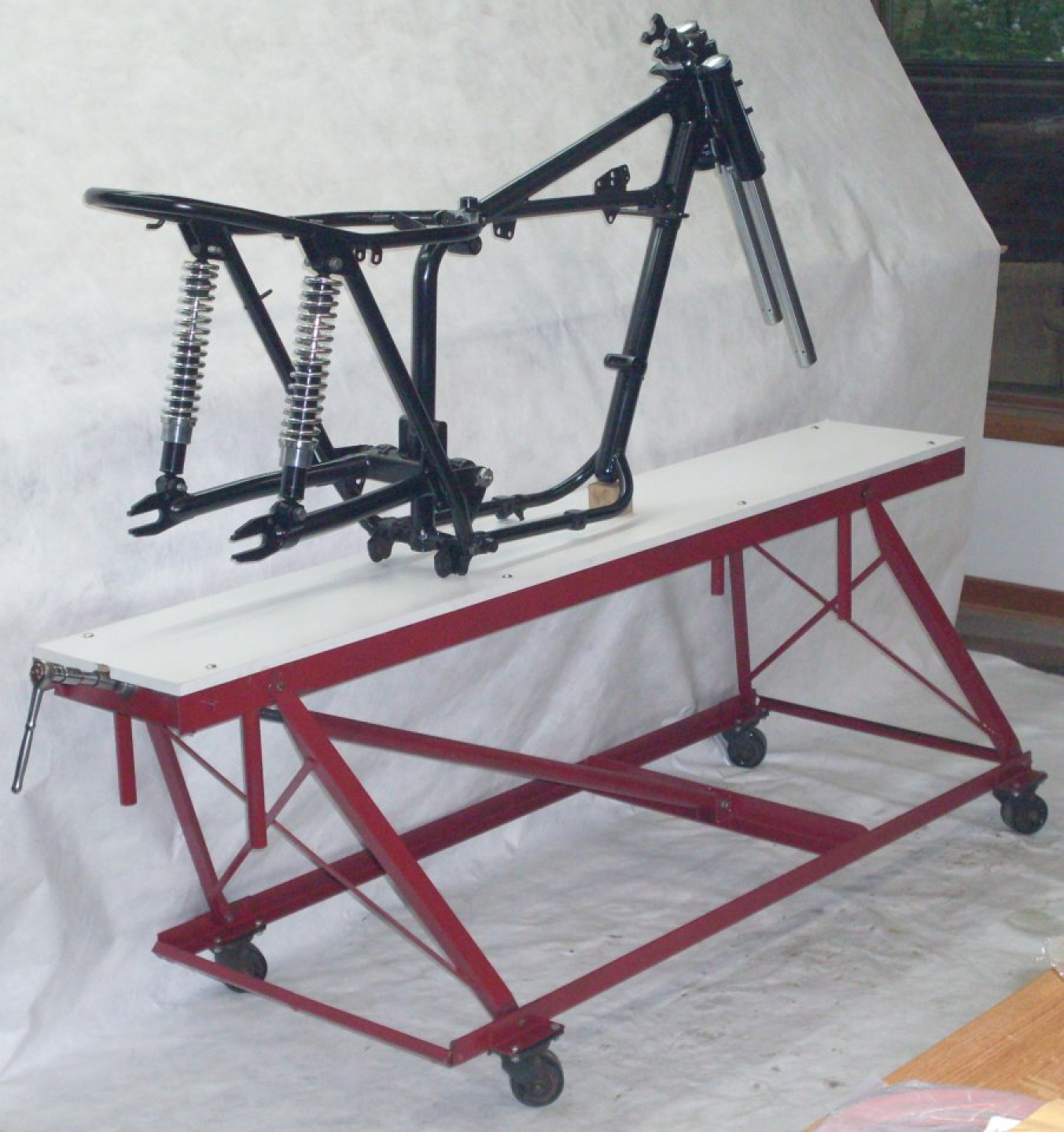
The table is lifted by an acme threaded shaft in the diagonal drawbar member. I welded a socket to the end of the shaft so I could use 3/8" drive socket tools to raise and lower. Hydraulic or electric power didn't seem justified for what will probably be a one-time use project.
One problem with the parallelogram mechanism is that when the table is low, the forces required to raise it can get very large. In fact, if the mechanism is lowered all the way until it is flat, theoretically no amount of fource will raise it, and the joints would fail before it raised at all.
The solution is to not allow the mecanism to lower all the way. It's not shown in these pictures, but the large forces at low lifts were distorting the cross piece where the lift screw is anchored, and I had to put diagonal braces there.
This lift lowers to about 10 inches, and I'll put a ramp on one end to accommodate the difference.
Here is the front wheel clamp: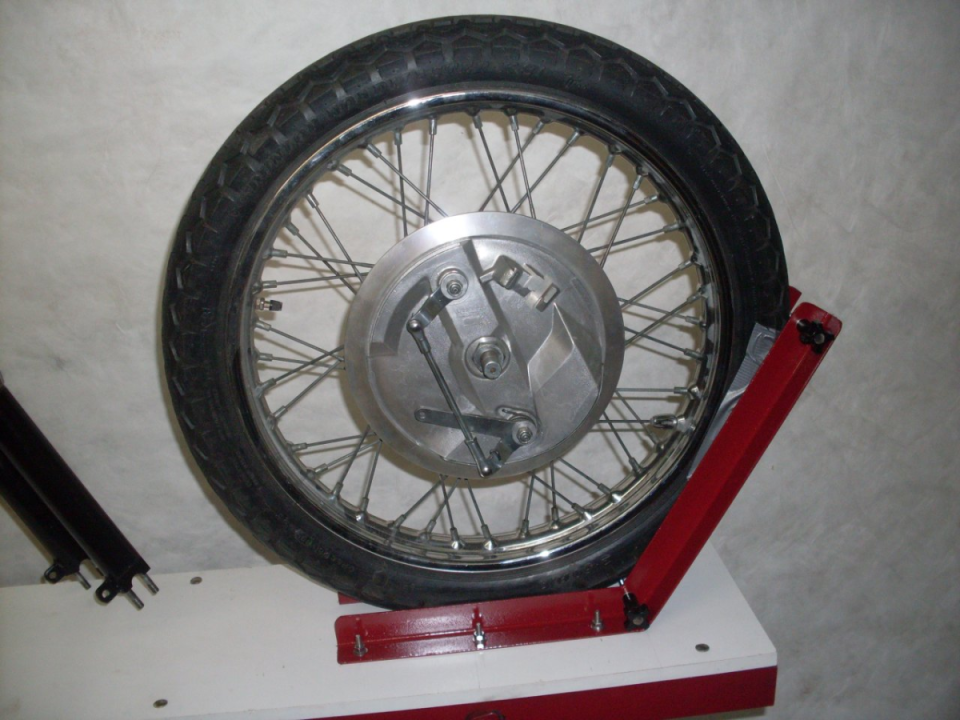
Now back to the show:
Mounted the rebuilt forks and top covers to the steering lugs. The last picture shows my rendition of factory tool 61-3824, used to pull the stanchion up into the top lug. I sacrificed an old cap nut for the part that threads into the top of the stanchion.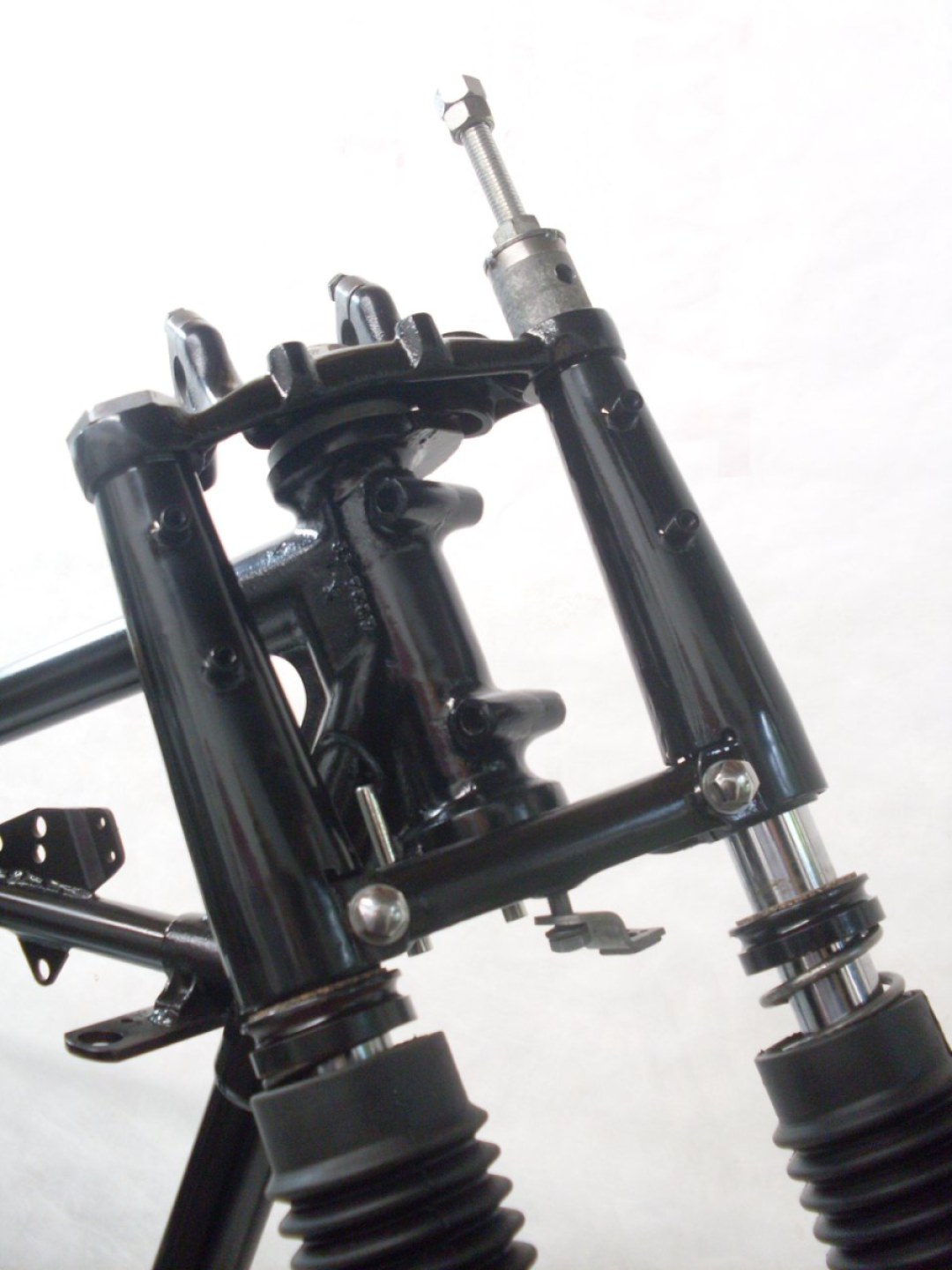
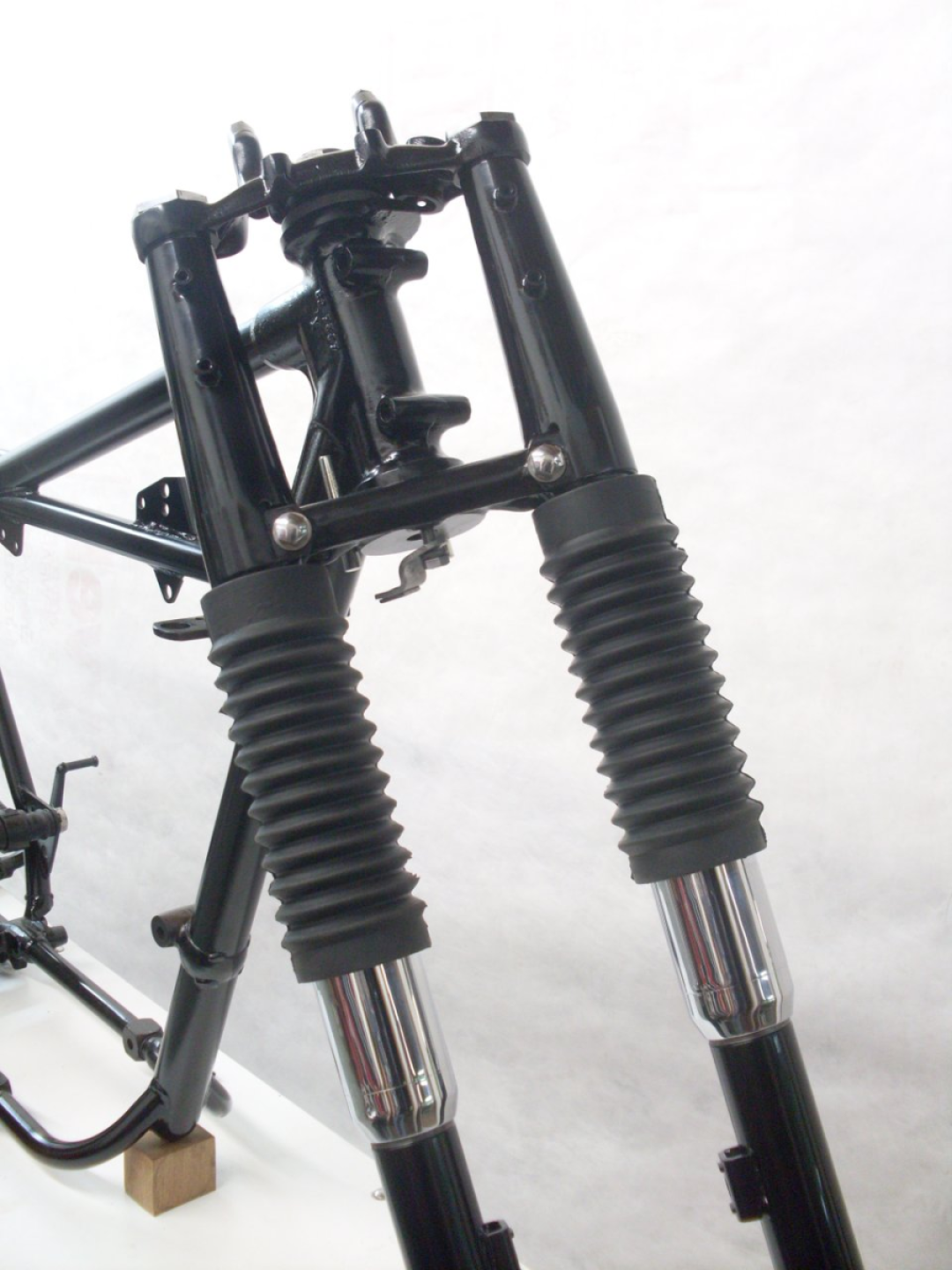
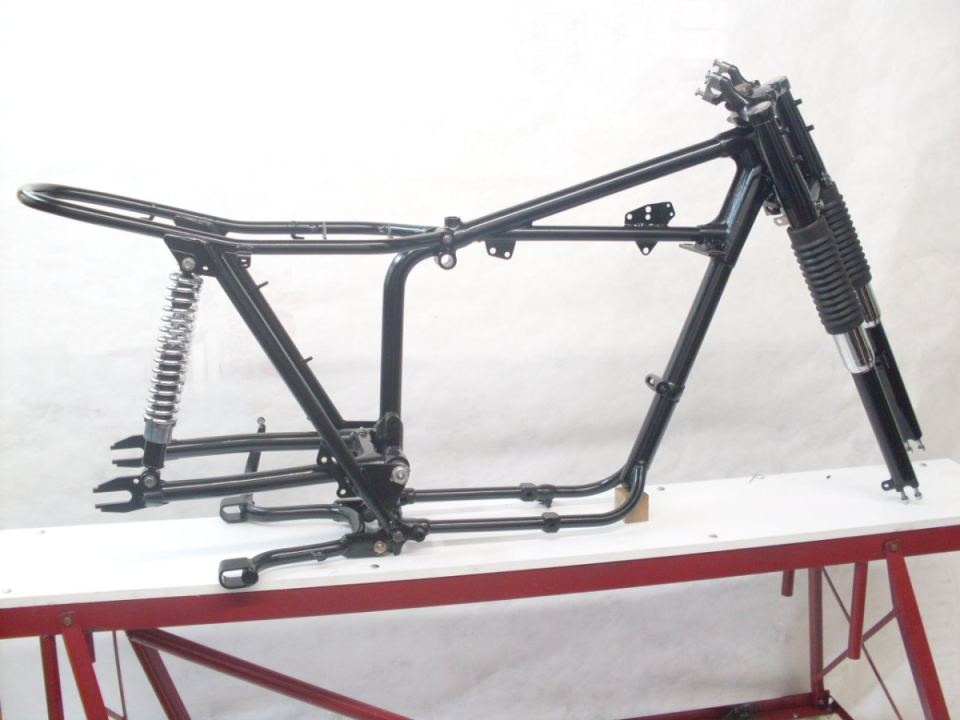
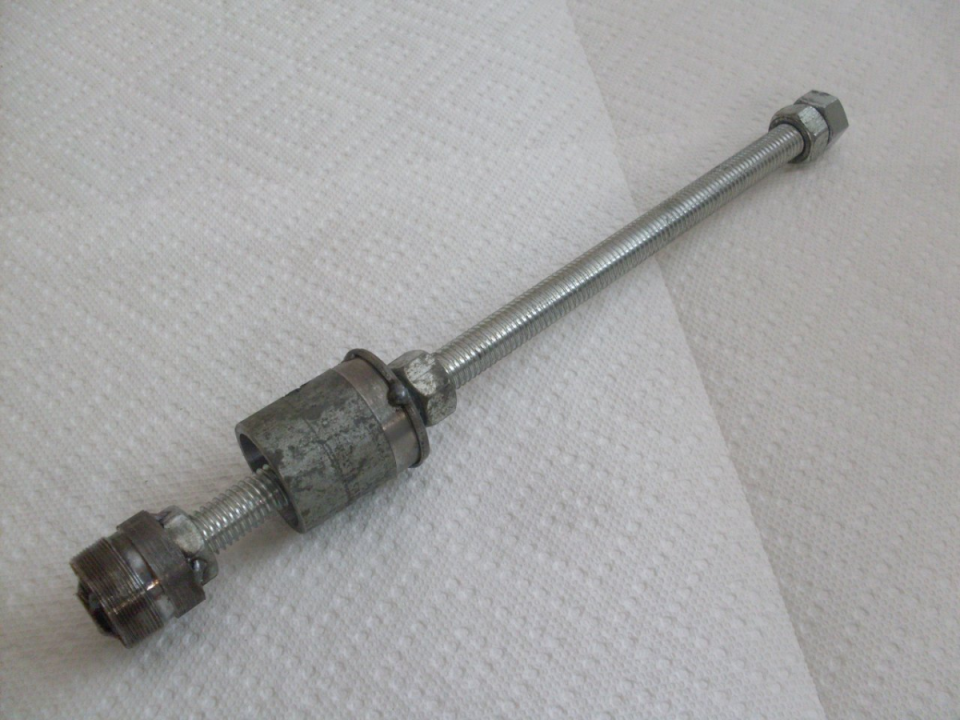
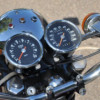
 Follow
1.5K
Follow
1.5K


